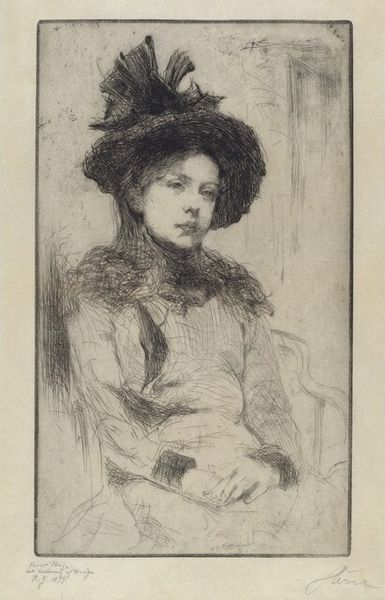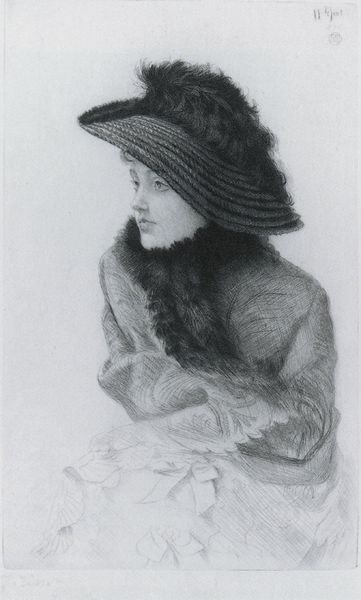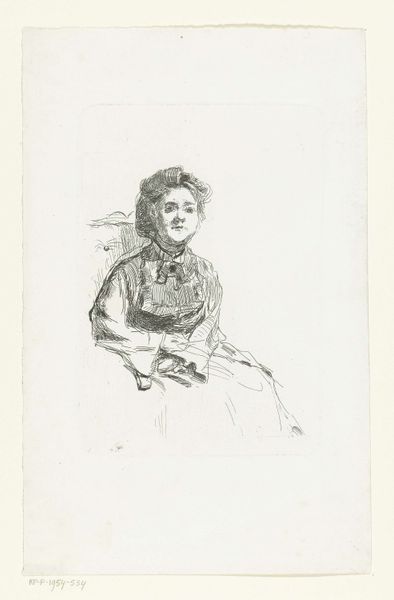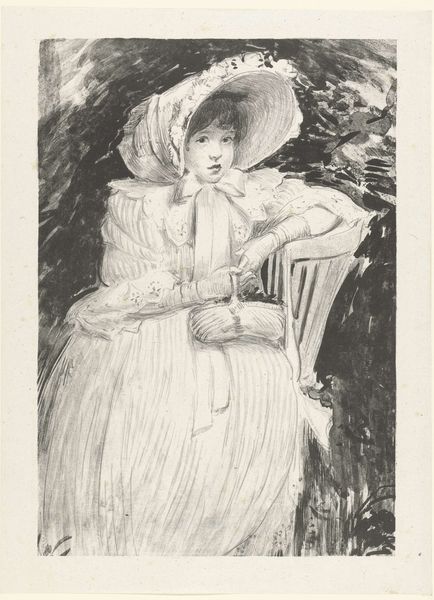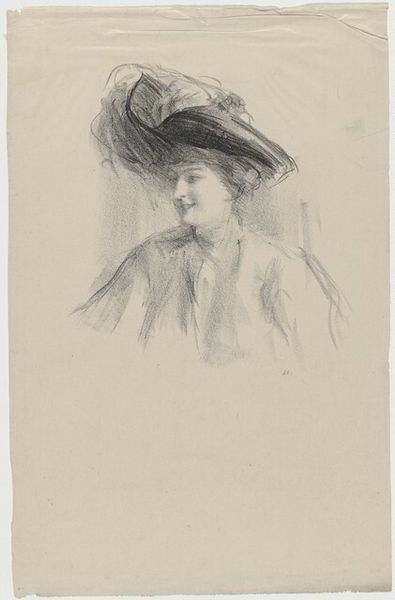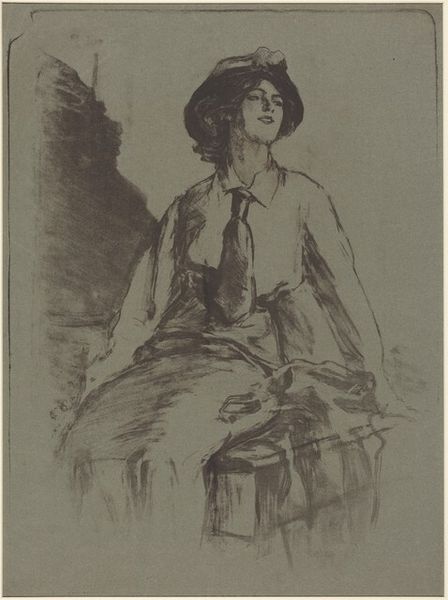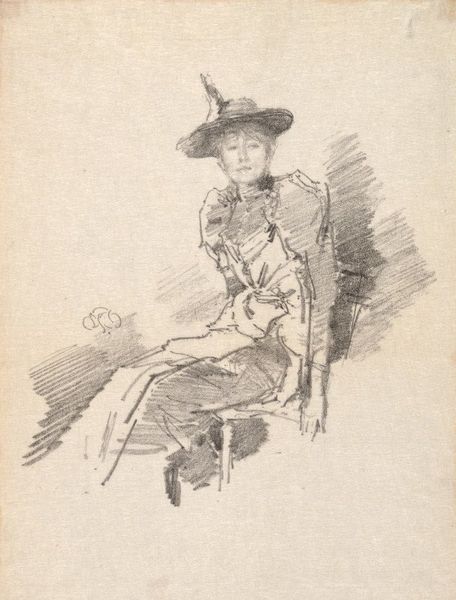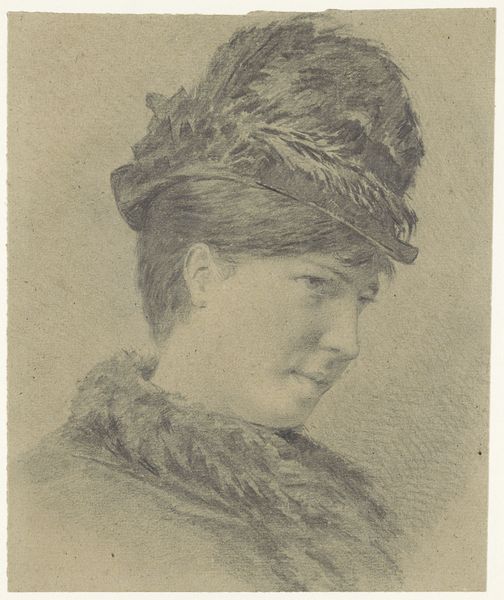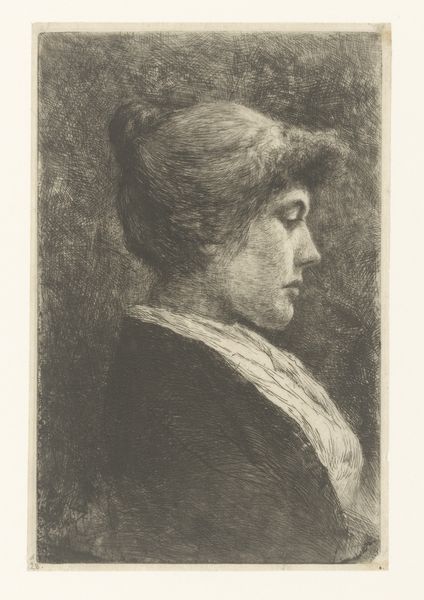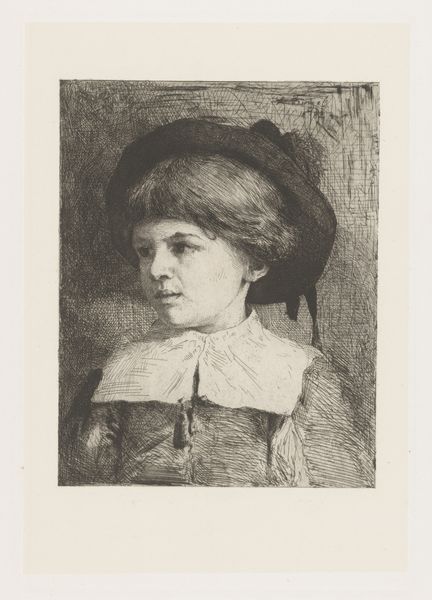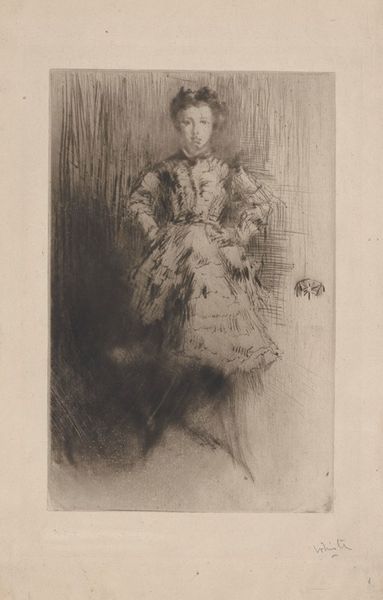
Portret van jonge vrouw, Anneke, staand met armen over elkaar en muts op haar hoofd. 1867 - 1888
0:00
0:00
print, etching
#
portrait
# print
#
etching
#
pencil drawing
#
realism
Dimensions: height 231 mm, width 174 mm
Copyright: Rijks Museum: Open Domain
Curator: Standing before us is "Portret van jonge vrouw, Anneke, staand met armen over elkaar en muts op haar hoofd," a portrait of a young woman created by Carel Lodewijk Dake between 1867 and 1888. It's an etching. Editor: The first thing that strikes me is how intense the gaze is, despite the almost whimsical hat she's wearing. There’s a directness to her expression that counters the soft, sketched quality of the print. Curator: The piece fits within a broader artistic trend in the late 19th century, an interest in depicting everyday life and ordinary people with a degree of realism. Dake, along with other Dutch artists, moved away from romanticized depictions and engaged more with social realities. Editor: Absolutely. And I'm curious about the name “Anneke.” While a simple name, within the visual language here it could signal humility, even servitude, and places the woman, and young women in particular, at a particular junction of culture and societal position. The hat amplifies that even more—is it meant to conceal, protect, or perhaps signal some affiliation with nature or rural settings? Curator: It’s fascinating to consider the function of the hat. Beyond social positioning, it could also be a way for Dake to engage with the visual symbolism of the peasant or working class. The act of portraiture itself often served political aims, either reinforcing the status quo, or subtly critiquing it by choosing previously uncelebrated subjects. Editor: I see that, the focus isn't just on her face, but the gesture of her arms crossed over her chest which also conveys a particular meaning. It is almost confrontational but also perhaps guarded or vulnerable. Do you think this was intentional, or more a reflection of the constraints or realities of life for women in the Netherlands during that period? Curator: That's precisely the question. Was Dake attempting to capture an inner psychological state, or reflecting existing societal constraints? I am curious to know what Anneke might have thought about the hat. Editor: Well, I find it very compelling that Dake has immortalized "Anneke" in this detailed etching. This simple choice elevates what was likely perceived as an insignificant existence into the realm of art. It grants her presence a unique cultural value. Curator: Indeed. And it prompts us to reflect on whose stories are told and by whom, and the power of art to make visible what was once unseen.
Comments
No comments
Be the first to comment and join the conversation on the ultimate creative platform.
